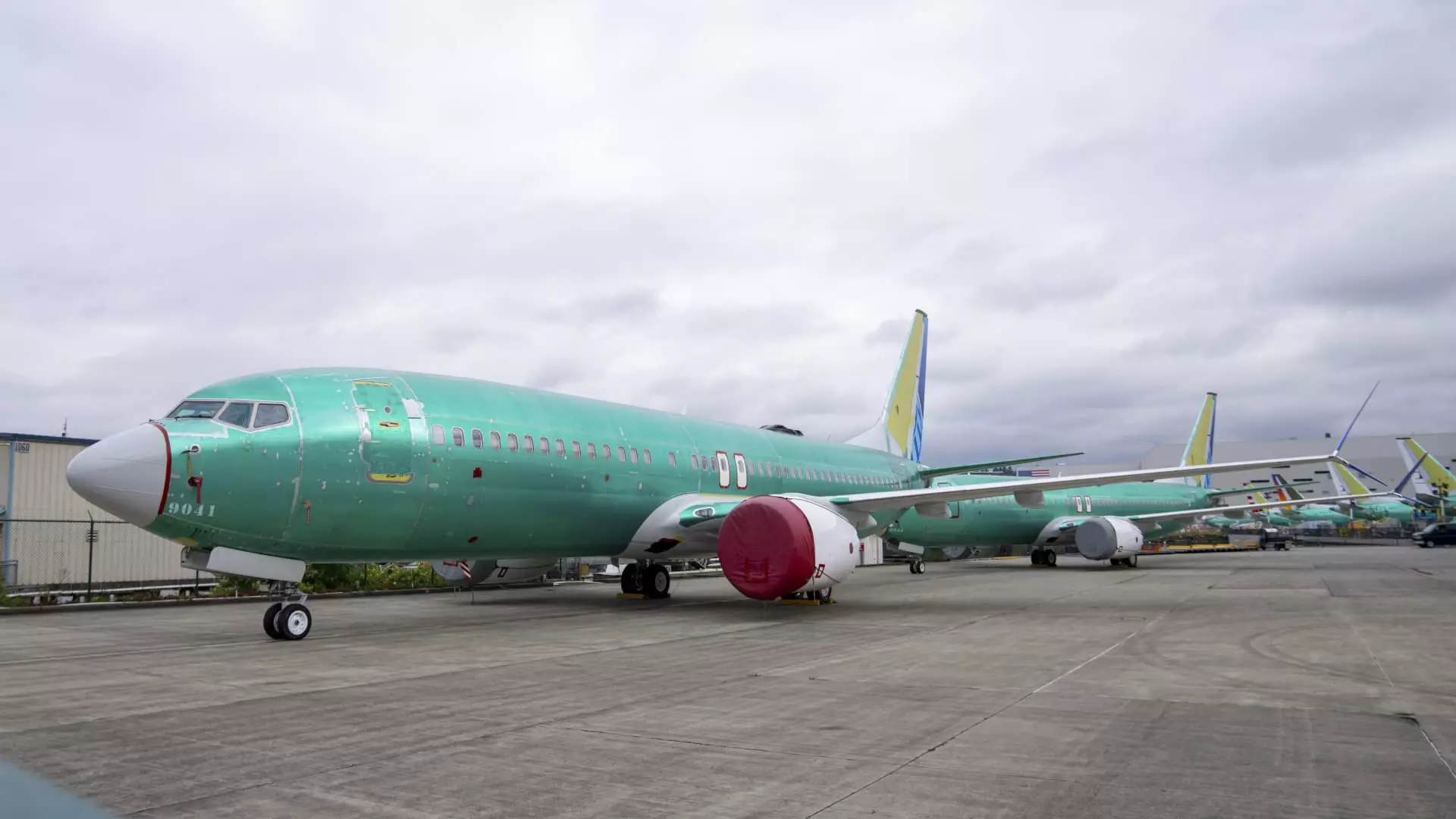Boeing, the aerospace giant with a storied history, finds itself in an increasingly precarious situation as it prepares to implement significant cuts to its workforce. The decision to reduce its employee count by approximately 10%, equating to around 17,000 jobs, underscores the severity of the company’s current challenges. Declining financial performance coupled with ongoing labor disputes has compelled CEO Kelly Ortberg to make unpopular but perhaps necessary decisions.
The announcement comes on the heels of news that Boeing’s highly anticipated 777X wide-body aircraft will not reach customers until 2026, representing a staggering delay of nearly six years from its original timeline. This unfulfilled promise not only reflects mismanagement within the organization but also raises questions about Boeing’s ability to recover in a competitive market. The repercussions of these delays are profound, as they hinder the company’s capacity to generate revenue and maintain market stature. A projected third-quarter loss of nearly $10 per share further accentuates the depth of crisis Boeing faces, as corporate leaders brace for a pre-tax charge of $3 billion in its commercial airplane division alongside another $2 billion from its defense sector.
Boeing’s stagnation can be traced to the compounded effects of labor strikes and an unsustainable business model leading to cash burn rates exceeding $1 billion monthly. The prolonged strike, initiated by machinists on September 13, has severely disrupted production, and escalating tensions between the company and union representatives have created an adversarial atmosphere. The company’s financial woes are not just numerical; they represent a loss of confidence from stakeholders, leading to warnings from credit rating agencies about a potential downgrade from investment-grade status.
Kelly Ortberg, who has been at the helm for just over two months, is tasked with the monumental challenge of steering Boeing back to stability amid turbulent waters. Referring to the current state as “a difficult position,” Ortberg’s messaging reflects an urgency to make fundamental changes within the organization. The necessity for structural adjustments, according to Ortberg, is critical for maintaining competitiveness and fulfilling customer expectations.
The looming layoffs—a combination of operational cuts and restructuring initiatives—come after a period when Boeing and its suppliers were actively seeking to bolster their workforce in anticipation of recovering demand post-pandemic. This contradiction highlights the volatility of the aviation industry, where rebuilding efforts can swiftly vanish when external pressures arise, such as labor disputes and production inefficiencies.
As Boeing navigates these turbulent waters, the company has not shied away from engaging in controversial tactics that may further exacerbate tensions with the International Association of Machinists and Aerospace Workers. Boeing recently filed an unfair labor practices complaint with the National Labor Relations Board, accusing the union of negotiating in bad faith. By withdrawing contract offers and maintaining an adversarial stance, Boeing risks alienating its labor force—a critical component of its operational backbone.
For the workforce, the fear of layoffs and uncertain job security looms large, creating an environment rife with anxiety and distrust. Many employees from diverse backgrounds have dedicated their careers to Boeing, contributing to the company’s legacy. The impending cuts will drastically alter the institutional memory of the organization, affecting the morale of remaining employees and impacting the company’s image in the labor market.
As Boeing walks a tightrope between financial salvation and operational degradation, the success of Ortberg’s strategy will rely heavily on the company’s ability to maintain public trust, nurture labor relations, and secure new orders. The road to recovery is painful and fraught with challenges, but without actionable reforms and a clear vision, Boeing risks becoming a shadow of its former self. In an industry characterized by innovation and responsiveness, the stakes are high, and the consequences of inaction could be catastrophic.
The unfolding drama at Boeing serves as a critical case study in corporate resilience and labor relations. The next chapter for Boeing is still being written, but for now, it’s hard to see where the ink might lead the storied company. The coming months will be pivotal, determining whether it can emerge successfully or remain ensnared in its cycle of crisis.

